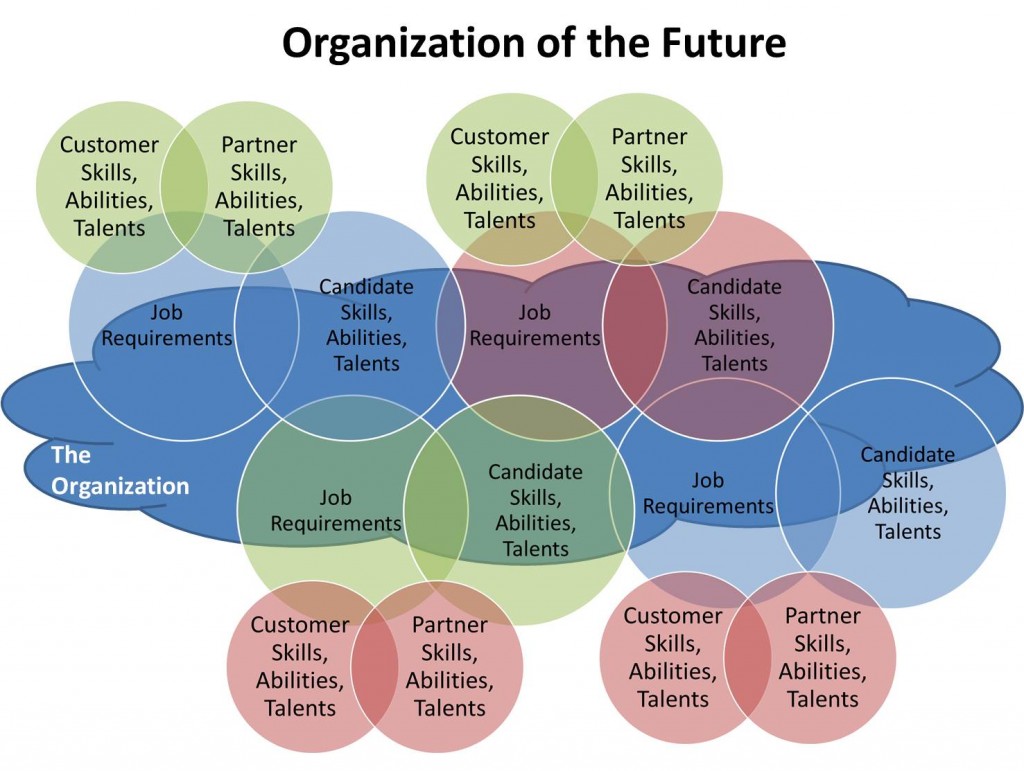
GUEST POST from Greg Satell
Every startup is exciting and romantic in the beginning. The founders usually know each other well and want to work together. They bring on others who are likeminded and committed to the mission of the enterprise. Long hours and shared experience makes the business feel less like work and more like a family.
Yet as the company grows and more people are brought on, the social fabric begins to fray. Roles, which once were fluid and interchangeable, begin to formalize and solidify. Tight camaraderie gives way to office politics. What was once a “family” begins to seem like just another place to work and earn a living.
The story is so common that nobody should be surprised when it happens, but inevitably most are, which is why few entrepreneurs prepare for it. Often, because they still feel connected to the senior team, they don’t even realize it’s happening until it’s too late. That’s a shame, because the breakdown of the family atmosphere can be avoided if you prepare for it.
The Dunbar Dilemma
In 1992, anthropologist Robin Dunbar published his groundbreaking paper on optimal group sizes. For humans, he estimated the maximum group size that can maintain stable relationships to be about 150, now known as the Dunbar Number. Other researchers using different methodologies have come up with slightly higher numbers, but the general principle stands. Go past a certain point and natural connections start to break down.
That’s why around when an organization hits 150-200 employees, the “family atmosphere” starts to break down and take on a decidedly more corporate feel. Early employees don’t feel the same bonds with the latecomers and new employees don’t build the same camaraderie when they join the company.
Inevitably, the change in atmosphere is attributed to the type of people hired, rather than the number of people in the organization. So the first step to solving the problem is to simply acknowledge that running a larger enterprise is different than running a small one. Culture will no longer take care of itself, you have to work to build and maintain it.
All too often, entrepreneurs attempt to reorganize the company at this point. That’s almost always a mistake. Valdis Krebs, who researches organizational networks, notes that reorganizations can often sever informal ties that you aren’t aware of but that are crucial to how the company functions.
The Importance Of Boundary Spanners
In the early 1970s, sociologist Mark Granovetter began researching how professional, technical and managerial workers found jobs in the Boston area. He was somewhat surprised to find that they often found work someone they knew, but not a close contact, like a friend or family member, but someone more removed, like a friend of a friend or a distant cousin. He called this principle the Strength of Weak Ties.
Further analysis shows why it works. Those who are closest to us know pretty much the same things we do, because they frequent similar places and do similar things. So if we want to gain access to new information, we need to broaden our scope and connect with people further out on the social spectrum.
In a small startup, the strength of weak ties plays a negligible role, because everybody knows each other through first-degree connections. However, once the Dunbar threshold of 150-200 people is passed, that’s no longer true. As the company grows, information increasingly needs to flow through second and third degree connections.
Network scientists call people who link disparate networks in an organization boundary spanners and they are crucial for maintaining culture as an organization grows. Once you understand the importance of boundary spanners, you can start redesigning programs and platforms to optimize for connection.
Redesigning Programs And Platforms For Connection
Every organizational culture is unique, so there are no hard and fast rules for designing programs and platforms to optimize for connection, but the best place to start is to build on what you already have. Often, companies accidentally find that an existing program that was built for another purpose effectively builds boundary spanners.
For example, Facebook originally designed its six week engineering bootcamp to help it scale by immersing new engineers in its methods and codebase, no matter what their level of experience. However, what it found was that bootcampers would build bonds during those six weeks that would persist long after they moved to disparate parts of the company.
In a similar vein, Experian found that its employees that participated in its “Le Tour de Experian” bike rides to benefit charity would build bonds that would span across organizational boundaries and lead to professional collaborations. So it built Employee Resource Groups and Clubs to build connections across a wider variety of interests.
Other companies, such as General Electric, encourage high potential executives to work in different divisions to create boundary spanners. Still others create seminars and best practice programs. There are many ways you can network your organization, once you learn to prioritize connections to build boundary spanners.
Evolving Leadership & Culture
In the early days of a startup most of the energy is necessarily focused on action items, such as developing a product, coming up with a go-to-market strategy and executing basic tasks. Job titles tend to be fluid and everybody pitches in where they can. With a small number of people, work can often be organized through quick huddles and whiteboard sessions.
Yet as the organization grows, more formal procedures and processes begin to take shape. Communication, necessarily, becomes more formal and less ad hoc. Roles within the company solidify and employees are increasingly expected to “stay in their lane.” Entrepreneurial leaders begin to spend less time focusing on the details of day-to-day execution.
This is when it is crucial for leaders to evolve from operational managers to what General Stanley McChrystal, in his book Team of Teams, calls “empathetic crafters of culture.” In a larger organization, a leaders role cannot be merely to plan and direct action, but needs to increasingly focus on shaping connections within the firm.
Perhaps most of all, entrepreneurs need to understand that the transition from a small startup to a significant enterprise doesn’t necessarily mean you have to lose “the family.” It just means that the leadership and culture need to evolve. That won’t simply happen all by itself. You have to put in the time and effort to make it so.
— Article courtesy of the Digital Tonto blog
— Image credit: Pixabay
![]() Sign up here to join 17,000+ leaders getting Human-Centered Change & Innovation Weekly delivered to their inbox every week.
Sign up here to join 17,000+ leaders getting Human-Centered Change & Innovation Weekly delivered to their inbox every week.







 Linda Bernardi is a Technology Strategist, Investor, and Founder & CEO at StraTerra Partners, The Bernardi Leadership Institute and a Strategic Advisor at Cloudant Inc. She is also the Author of Provoke, Why the Global Culture of Disruption is the Only Hope for Innovation. Learn more here about
Linda Bernardi is a Technology Strategist, Investor, and Founder & CEO at StraTerra Partners, The Bernardi Leadership Institute and a Strategic Advisor at Cloudant Inc. She is also the Author of Provoke, Why the Global Culture of Disruption is the Only Hope for Innovation. Learn more here about  I’ve been thinking a lot lately about personal branding, in part because I’m about to begin a new
I’ve been thinking a lot lately about personal branding, in part because I’m about to begin a new 

